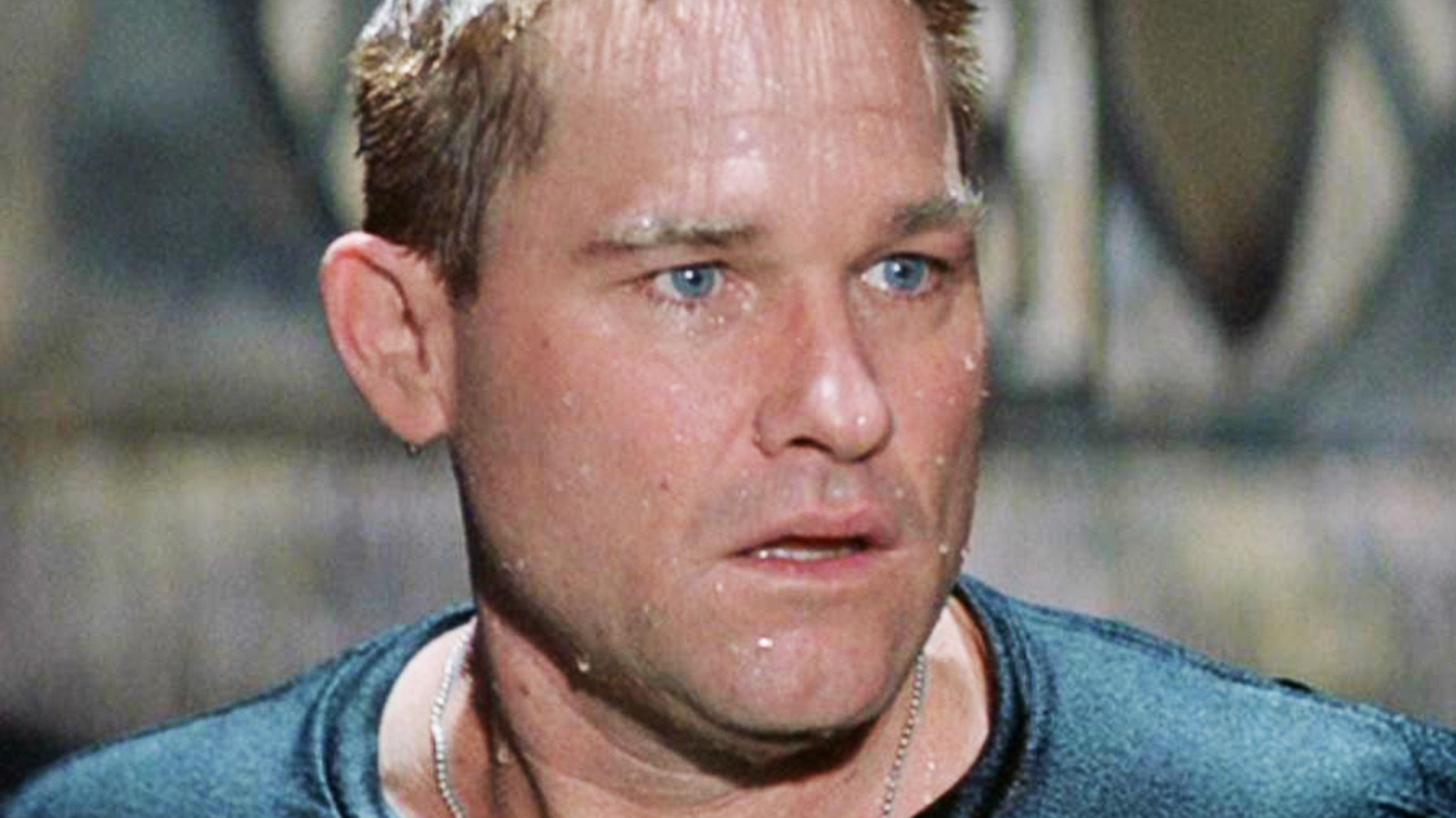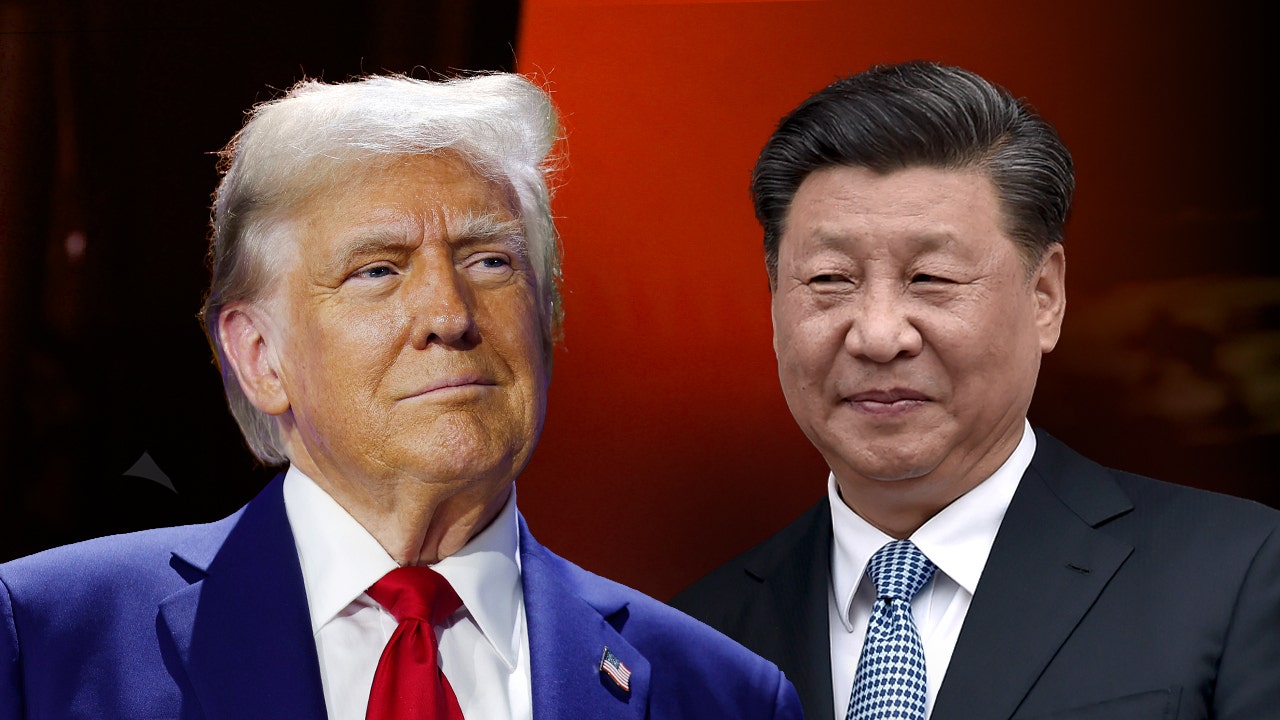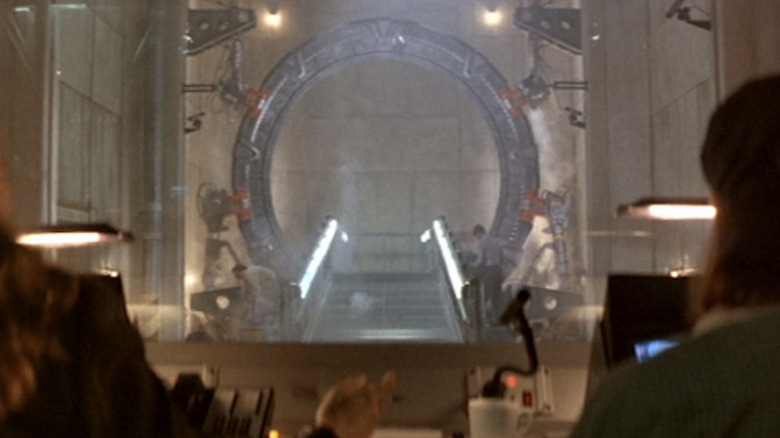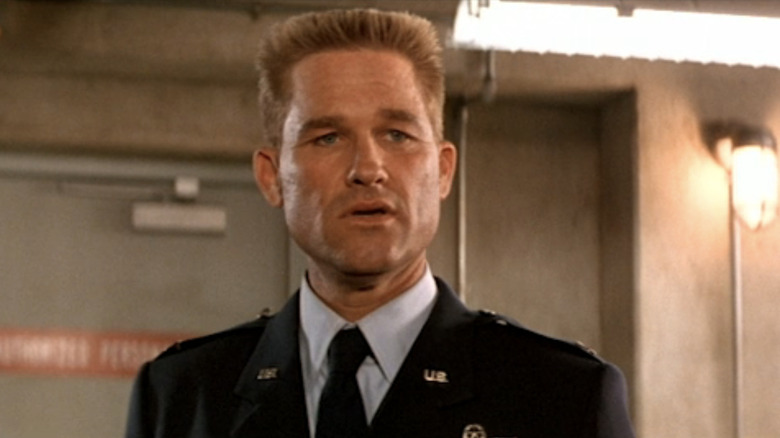Entertainment
The Stray Cats cancel U.S. tour months after Brian Setzer is diagnosed with autoimmune disease

Brian Setzer was on tour with the Stray Cats last year when he noticed the earliest signs of what was eventually diagnosed as an autoimmune disorder.
Now, it seems that disorder may be keeping Setzer off the road.
The Stray Cats said Tuesday they would be canceling their fall U.S. tour as Setzer, 66, battled a “serious illness.” The announcement comes months after Setzer’s diagnosis, although it’s not yet clear if this is a separate health issue.
“I know this affects so many people and I am devastated to have to deliver this news,” Setzer wrote Tuesday on X. “I’ve been trying everything I can to go on and do these shows, but it is just not possible.
“I’ve been looking forward so much to being on stage with my band mates again,” he said, “and playing for all of our amazing fans, and I’m gutted.”
The Stray Cats initially canceled the first two stops on their fall run, in Mount Pleasant, Mich., and Rockford, Ill., before scrapping the whole tour Tuesday. The band said refunds would be available at the point of purchase and did not announce any future tour dates.
Setzer first shared details about his unspecified autoimmune disease in February, writing on social media that, although the illness was not painful, it rendered him unable to play guitar.
“It feels like I am wearing a pair of gloves when I try to play,” he wrote, adding that the disease had for a time hindered his ability to accomplish everyday tasks like tying his shoes.
The artist said that he had been improving as he received care at “the best hospital in the world down the block from me,” the Mayo Clinic.
“I know I will beat this, it will just take some time,” he said. “I love you all.”
The Stray Cats, formed by Setzer, Lee Rocker and Slim Jim Phantom in 1979, have dissolved and re-formed several times over the decades. In 2019, the founding trio reunited to release a 40th anniversary album, aptly dubbed “40,” their first album in a quarter of a century.
On Friday, the band rolled out its first release since then. The pair of singles, consisting of original song “Stampede” and a cover of Eddie Cochran’s “Teenage Heaven,” were described on the band’s website as “loud, upbeat, and unmistakably The Stray Cats.”
“Jim and I cut both songs in Minneapolis at Terrarium Studios,” Setzer said in a statement posted to the site. “‘Stampede’ was an instrumental that I wrote lyrics for. I basically copied the guitar part, which was pretty ahead of its time to begin with, and ‘Teenage Heaven’ is one of the few Eddie Cochran songs that has not been covered to death.”
Rocker said “‘Stampede’ has the drive and intensity that brings me back to our first album,” and “‘Teenage Heaven’ is a classic Eddie Cochran song that we put our [Stray] Cats magic on.”
“The Cats are back and better than ever,” the bassist said.
Times staff writer Alexandra Del Rosario contributed to this report.

Movie Reviews
Isekai Quartet The Movie: Another World Anime Film Review

When it comes down to it, the main selling point of Isekai Quartet as a whole is watching characters from across entirely different series interact—and often in comical ways. Does this film do this as well as the TV series? The answer is a simple “yes.”
The film begins with our heroes being transported to a post-apocalyptic fantasy world and promptly being attacked. This, in turn, splits them into three main groups. The majority end up with Subaru—though notably without the rest of the titular quartet and Emilia. This allows for lots of humorous interactions between the characters as their leaders are all notably absent. At the same time, Subaru is forced into the role of de facto head of the class and serves as the main point of contact between our heroes and two of the characters already occupying this world, Alec and Pantagruel.
Meanwhile, Ainz and Kazuma (who make a great odd-couple pair) meet up with the final inhabitant of this world, a woman clad in the same style of uniform as Tanya, named Vera. She reveals that she had been isekai’d to this world and is attempting to return to her old world at the head of an army of golems to bring an end to the war. This has brought her into conflict with Alec and Pantagruel, as they wish to stay in this world and are against her returning to her own.
This brings us to the main themes of the film—loneliness and lies. Vera is a woman suffering from extreme betrayal. The Saga of Tanya the Evil world’s equivalent of a first-generation German-American, she suffered greatly once the war in Europe began. She found herself and her family shunned by the community she had grown up in—and vowed revenge on those responsible.
Yet, in this ruined world with Alec and Pantagruel, she found peace and a new family. Subsequently, being betrayed by them—being lied to about not being able to return to her old world—has made her even more distrustful of others and hyper-focused on her original goal.
However, Vera wasn’t the only one alone. Pantagruel spent 400 years on this desolate world as its only conscious inhabitant. With the arrival of Alec and Vera, she finally had someone to talk to—to live life with. Giving that up, even when she knew she should tell Vera what she and Alec had discovered about traveling to other worlds, was too hard for her to do.
Though this web of lies and loneliness puts Pantagruel, Alec, and Vera at the center of the film’s story, that doesn’t mean our heroes from across the Kadokawa multiverse are unrelated to it. The golems that populate the film are related to both the KONOSUBA and Overlord worlds. Likewise, Alec himself has deep ties with the past of the Re:Zero world that set up the problems Subaru and Emilia now face there.
Yet, the deepest connection in the film is that between Tanya and Vera. While Tanya does not know Vera, Vera most certainly knows about the infamous Tanya “White Silver” von Degurechaff. And through her, Tanya is confronted with her own role in starting a world war. But the real meat of their shared story is the question of how much, if at all, Tanya has changed since the start of Isekai Quartet. Is she still the overly rational, empathy-lacking, stickler for the rules she always was in her own anime? Or has she grown to the point where she can sympathize with the plight of a stranger—or, perhaps, even an enemy?
One of the best-selling points of this film is that it actually feels like a movie. Rather than the school setting of the series, we are instead treated to a true fantasy world of ruins, deserts, forests, and golems. Beyond that, the cinematography is greatly improved with surprisingly clever camera work and some legitimately striking moments of visual composition. And then there’s the big extended fight scene at the climax. It’s far beyond anything we’ve seen in the TV anime, and not only does it look good, but it also creatively uses the characters’ powers and backstories from across all the different series to achieve victory.
Isekai Quartet The Movie: Another World is clearly made by a group of people who have an insanely in-depth knowledge of all the series they’re combining. It’s full of fun moments and comedic beats—but also manages to delve into a surprising bit of heartfelt drama. Of course, the insane bar for entry is the weakest aspect of this film, as it’s best if you’ve not only seen all four main anime plus The Rising of The Shield Hero but also the previous two seasons of Isekai Quartet. However, if you’ve seen at least two of the big four anime Isekai Quartet is based on, I think you’ll be surprised at how much you enjoy this film.
Entertainment
‘SNL’ mocks NYC mayoral race and host Miles Teller visits the White House as the Property Brothers

As we mentioned last time when Sabrina Carpenter hosted “Saturday Night Live,” there’s no substitute for a host who fully throws themselves into “SNL.”
He may not have done double duty as host and musical guest the way Carpenter did, but Miles Teller appeared to fully embrace the challenge of returning to host for a second time (the first was in 2022). The “Top Gun 2: Maverick” star, who’ll next be appearing in the movie “Eternity,” gave a solid performance, appearing in nearly every sketch, including the cold open and two pre-recorded videos.
He first appeared as former Gov. Andrew Cuomo, a candidate for New York mayor, in the cold open with help from Ramy Youssef and Shane Gillis as opponents Zohran Mamdani and Curtis Sliwa.
After that, Teller played a hungover game show contestant recovering from Halloween, a hockey player shooting a public service announcement for the unfortunately named Nashville Predators and both twin Property Brothers in a video sketch about the current White House renovation.
Teller was also in a sketch about a TV newsroom that decides to show viewers what its background employees are doing, a Netflix promo for a true crime story about husbands who don’t know where their wives went, one about a police press conference that takes a turn and a show closer about a silly Italian restaurant in Nebraska.
Teller handled it all well; he’s good with accents and earned strong laughs, especially playing two characters at the same time in the “Property Brothers” sketch and as Cuomo in the cold open.
Musical guest Brandi Carlile performed “Church & State” and “Human.”
This week’s cold open was one of the stronger (or at least funnier) political sketches of the season so far, tackling the New York mayoral race. As hosted by Errol Louis (Kenan Thompson), “the least famous person to be impersonated on ‘SNL,’ ” the debate sketch portrayed Cuomo (Teller) as a sexually harassing (“Yadda yadda yadda, honk honk, squeeze squeeze) panderer to Jewish voters; Mamdani (Youssef) as a force-smiling, TikTok-flirting candidate who’s pretty sure he won’t be able to implement his promises; and long-shot candidate Sliwa (Gillis) as an “old-fashioned New York nut” with one traumatic story after another to recount. The biggest surprise may have been Gillis, who as Sliwa recounted stories about being hung by his testicles and getting assaulted by a Times Square Spider-Man. Where was this energy when Gillis hosted “SNL”? As has been the habit on many a cold open, President Trump (James Austin Johnson) interrupts the proceedings to mock the candidates and insert his own commentary. This time, that included singing a song from “Phantom of the Opera” to conclude the sketch.

Teller’s monologue was short and simple, relaying how as a kid who moved around most of his childhood, “SNL” was a constant. He shared a photo of himself and his sisters dressed up as the “Night at the Roxbury” characters from the show and then made up a list of memories from the show, like having his first beer in the audience and falling over after having a few beers. Teller mentioned that he and his wife lost their Palisades home in January’s Los Angeles fires. As such, he made sure to point out the fire exits for the audience.
Best sketch of the night: An extreme White House makeover

The Property Brothers Jonathan and Drew Scott (Teller times two) meet their toughest clients yet: Trump and First Lady Melania Trump (Chloe Fineman) who need help with their current renovation of the White House to make room for a new ballroom. Melania shared her skeleton and withered tree decorations (“They are for Christmas,” she said), and the couple complained that 55,000 square feet and 132 rooms just isn’t enough space. With a budget of “$350 million to infinity” the brothers get to work with the help of park rangers and astronauts working through the government shutdown. But when it comes to getting paid for their work, there’s a problem. “Aren’t you guys from Canada?” the president asks. Then he calls ICE on them.
Also good: Nobody asked for this much transparency in news

On a show called Newspoint, the host (Fineman) and her guest (Thompson) are trying to have a serious news discussion, but because the show has opened up its full newsroom to viewers, all the workers in the background draw attention. Among them are Mikey Day, who awkwardly notices the cameras are on him before spilling a carrier of drinks, Bowen Yang as a worker who gets electrocuted by a copy machine and Teller, who has manga erotica up on his work screen. It’s nice to see some physical comedy from Day in particular and the sketch’s visual gags work nicely.
‘Weekend Update’ winner: George Santos is back, untruthful as ever!

Andrew Dismukes and Ashley Padilla (who should be a full cast member at this point instead of a featured player) played a couple who just made out but are trying to discuss the government shutdown. But it was Yang as chronic liar George Santos who stole “Update” (and some jewels) after Yang missed an opportunity on the last “SNL” episode to play the former representative, whose prison term was commuted by Trump. Santos claimed he finished the New York marathon, which hadn’t happened yet, and kept interrupting his chat with “Update” co-host Colin Jost to take calls with prisoners with a jail window and phone he brought with him. He purported to speak with Ghislaine Maxwell, Luigi Mangione and Sean “Diddy” Combs before revealing that the key to making prison rice pudding is preheating the toilet to 350 degrees. Santos ended the segment by revealing the necklace he stole from the Louvre and insisting that he’d just won the World Series.
Movie Reviews
Roger Ebert Had An Extremely Harsh Review For A Classic Kurt Russell Sci-Fi Movie – SlashFilm

Throughout his illustrious career, Roger Ebert had several surprising takes on unlikely movies. He gave a perfect score to controversial sci-fi film “Prometheus” and bestowed a similarly flawless score on a mediocre Samuel L. Jackson crime thriller. On the other end of the spectrum were the films for which the critic reserved his most acerbic opprobrium. Ebert absolutely hated a forgotten Clint Eastwood gangster movie, which he labelled a travesty. Frankly, that assessment of 1984’s “City Heat” was probably a fair one, but he proved he could be equally as caustic ten years later when he took down Roland Emmerich’s “Stargate” movie.
Written by Emmerich and Dean Devlin, “Stargate” starred Kurt Russell as United States Air Force Colonel Jack O’Neill, who’s placed in charge of mysterious stones uncovered in Egypt bearing hieroglyphics that refer to the titular portal — a device that allows travel between two points in the universe. After Egyptologist Daniel Jackson (James Spader) figures out the meaning behind the markings, he, O’Neill, and a team of explorers pass through the Stargate to the desert planet of Abydos, where they end up trapped after Jackson fails to find the right markings to send them home. Making matters worse, their space excursion has led them to a world ruled over by the despotic Ra (Jaye Davidson), an alien who visited Earth during the time of the Ancient Egyptians, adopted their customs, and enslaved large swathes of their people. The rest of the film sees O’Neill and his crew fighting for their survival and a chance to return back through the Stargate to Earth.
Despite receiving mixed reviews from critics, “Stargate” was a commercial success, grossing $196.6 million worldwide on a budget of $55 million. Unfortunately, Roger Ebert liked the movie about as much as “City Heat.”
Even Kurt Russell didn’t want to star in Stargate at first
When Roland Emmerich signed on to direct “Stargate,” he likely had no idea it would create a sizable media empire. The “Stargate” franchise now comprises multiple TV series, direct-to-home-media movies, comic books, video games, and novels. But in the early ’90s it was just an idea in Emmerich’s head. Inspired by the 1970 documentary “Chariots of the Gods,” which suggested that aliens were responsible for creating civilization, Emmerich joined forces with Dean Devlin to develop the lore of the “Stargate” universe and write his movie. Eventually, the pair secured funding from Canal Plus and set about casting, but it took some time to get Kurt Russell onboard.
Devlin told Variety that the actor actually turned down the movie initially. It seems the “Escape from New York” star wasn’t a fan of the script, which, it was later revealed, was an early version that shouldn’t have been sent out. Once the producers sent Russell an updated screenplay and upped their salary offer, the movie had its Colonel Jack O’Neill (who would eventually be played “MacGyver” star Richard Dean Anderson in the TV series continuation “Stargate SG-1”). As Devlin recalled, “When he actually saw the shooting script he went, ‘Oh, this isn’t so bad.’”
Sadly, Roger Ebert didn’t feel the same. When the movie finally debuted in October 1994, the critic was merciless in his assessment, writing, “The movie ‘Ed Wood,’ about the worst director of all time, was made to prepare us for ‘Stargate.’” What was the critic’s issue with “Stargate?” Well, he has several, and kicked off a long-running feud between he and Emmerich with his review.
Roger Ebert thought Stargate was a series of action movie cliches
“Stargate” was by no means a critical disaster. At the time of writing, it has a 53% rating on Rotten Tomatoes and managed to impress several critics with its special effects. It was, on the whole, seen as a bit of mindless blockbuster fun, but Roger Ebert, wasn’t having any of it.
The critic didn’t let Roland Emmerich get away with anything, pointing out every single plot hole and inconsistency in his takedown of “Stargate.” According to Ebert, this was “the kind of movie where a soldier can be transported to ‘the other side of the known universe’ in a whirlpool of bizarre special effects, step into a temple on an alien planet, and say, ‘What a rush;’” “the kind of movie where the sun god Ra, who has harnessed the ability to traverse the universe at the speed of light, still needs slaves to build his pyramids.” Ebert wasn’t won over by any part of the movie, giving “Stargate” one star and proclaiming it to be “lacking in any sense of wonder” and “like a film school exercise. Assignment: Conceive of the weirdest plot you can think of, and reduce it as quickly as possible to action movie cliches.”
“Stargate” was the beginning of Emmerich and Dean Devlin’s working relationship, with the pair going on to collaborate on 1996’s “Independence Day,” 1998’s “Godzilla,” 2000’s “The Patriot” and 2015’s “Independence Day: Resurgence.” But “Stargate” also marked the beginning of an infamous feud between Ebert and Emmerich, with the former criticizing “Independence Day” leading Emmerich to take a swing at the critic by including a Mayor Ebert parody character in “Godzilla.” Ebert and fellow critic Gene Siskel then summarily trashed the film.
-

 Milwaukee, WI5 days ago
Milwaukee, WI5 days agoLongtime anchor Shannon Sims is leaving Milwaukee’s WTMJ-TV (Channel 4)
-

 News6 days ago
News6 days agoWith food stamps set to dry up Nov. 1, SNAP recipients say they fear what’s next
-

 Alabama1 week ago
Alabama1 week agoHow did former Alabama basketball star Mark Sears do in NBA debut with Milwaukee Bucks?
-

 News1 week ago
News1 week ago1 dead, 6 injured in shooting at Lincoln University homecoming festivities
-

 Austin, TX1 week ago
Austin, TX1 week agoDia De Los Muertos Austin: Parades, Altars & Events
-

 Politics1 week ago
Politics1 week agoTrump to jet off to Asia as North Korea fires ballistic missiles and China trade questions loom
-

 Seattle, WA5 days ago
Seattle, WA5 days agoFOX 13’s Aaron Levine wins back-to-back Jeopardy! episodes
-

 Culture4 days ago
Culture4 days agoVideo: Dissecting Three Stephen King Adaptations


















